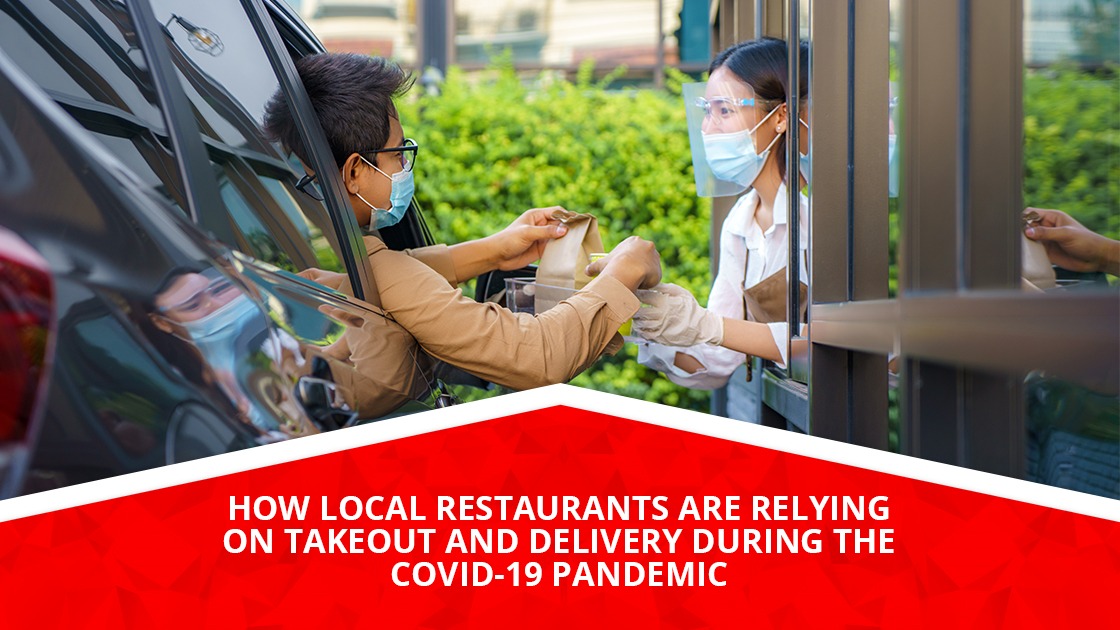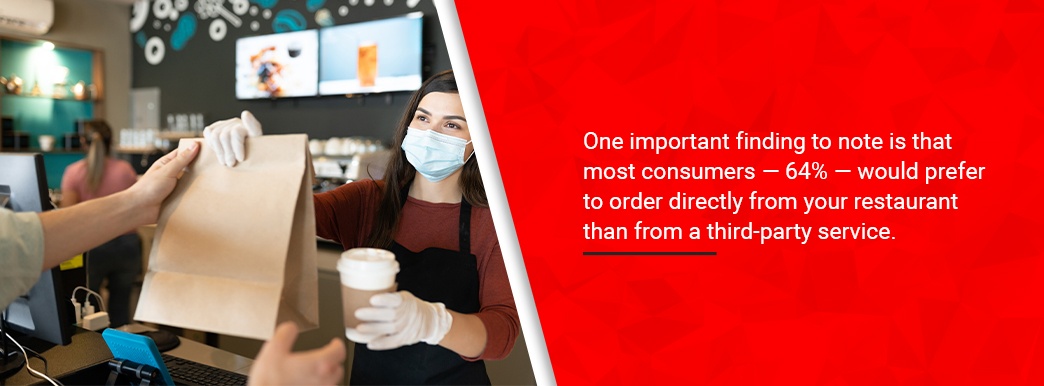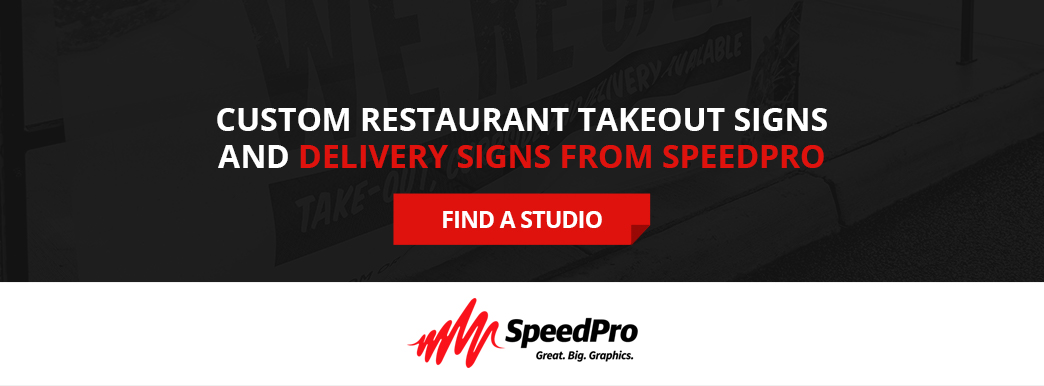
How Local Restaurants Are Relying on Takeout and Delivery During the COVID-19 Pandemic
JUNE 3, 2021| SpeedProCategories
SignageThe COVID-19 pandemic hit the restaurant industry hard — harder than any other industry, according to some sources. More than 110,000 restaurants closed their doors in 2020. Fortunately, for many, this closure was temporary. Even restaurants that have stayed open or reopened, though, have had to make changes to overcome the challenges the pandemic has thrown their way.
One major change for many restaurants has been moving their focus from dine-in to takeout and delivery. These off-premise services have been a mainstay for restaurants and for customers throughout the pandemic, and they continue to be a major ingredient in restaurants’ recipes for success during this time.
How Restaurants Have Pivoted to Prioritize Takeout
The most significant drop in seated restaurant customers occurred during the first few months of the pandemic. As many states and local jurisdictions imposed restrictions on restaurants, they had to pivot to stay afloat.
For many restaurants, that meant putting a new level of focus on takeout and delivery services. Since these services don’t involve customers congregating inside or coming into contact with other diners and staff, it was the perfect solution for following restrictions while still maintaining some cash flow and getting customers the food they love.
For some restaurants, off-premise orders were previously a tiny percentage of their total sales or may not have been part of their business equation at all. These restaurants had to make the biggest changes to adapt. In some cases, this meant adding online ordering options or partnering with food delivery platforms to get orders to hungry customers. Fine dining and casual dining restaurants made the biggest changes, with more than half of these establishments devoting more resources to expanding their off-premise services.
No matter whether they already offered takeout services, the vast majority of restaurants added curbside pickup services during the pandemic to serve customers without the need for any contact inside.
Some restaurants have also adapted their menus to be more conducive to takeout and delivery. The most common changes included reducing the number of menu items. Over half of casual and family dining restaurants made this change, and 63% of fine dining restaurants did the same. Many restaurants also added new items to their pared-down menus.
For consumers stuck at home dealing with new challenges of their own, being able to order takeout or delivery has been a welcomed convenience and source of fun. The National Restaurant Association’s 2021 State of the Restaurant Industry Report found that more than two-thirds of consumers are now more likely to purchase takeout from a restaurant than they were before the pandemic. More than half of consumers surveyed even said that takeout and delivery are now essential to their lifestyles.
As restrictions lift, allowing more indoor dining, restaurants may continue to benefit from keeping a focus on takeout and delivery. Americans have become accustomed to enjoying food from their favorite restaurants in their homes as a regular part of their routine. Pandemic or not, what’s not to love about enjoying a delicious meal with your family while watching a movie or chatting around your own dinner table, all without the need for any cooking or mess to clean up?
Catering to Customers’ Takeout and Delivery Preferences
The 2021 industry report also found that consumers have some preferences when it comes to the ways they use takeout and delivery services. Understanding these preferences can help restaurants appeal to as many of their target customers as possible.
One important finding to note is that most consumers — 64% — would prefer to order directly from your restaurant than from a third-party service. However, 18% of people prefer using a third-party delivery service, and many consumers are willing to use these services even if they aren’t their preferred channel for delivery orders. A 2020 survey found that DoorDash was the most popular online delivery provider, with 52% of respondents saying they had used the service in the last 12 months.
For restaurants that don’t have their own delivery vehicles and drivers, third-party services have been a helpful way of still reaching hungry customers. In some cases, consumers may even discover your restaurant for the first time because they see it featured on their favorite delivery app. Still, if restaurants can offer delivery services to customers directly, that can save both them and their customers from fees and help them cater to customers’ preferences.
However they order, consumers have also shared preferences when it comes to what they order for takeout and delivery. Consumers are often looking to order from restaurants with comfort food dishes. One in five casual and family dining restaurants added comfort food items to their menus in 2020 to appeal to this preference. Another popular draw for many customers is healthy menu items.
When it comes to drinks, many consumers are interested in whether a restaurant offers alcohol to-go with takeout orders. Even more restaurants responded to this preference, with seven in 10 full-service establishments adding the option for alcoholic beverages to-go since March 2020.
Advertising Your Takeout Services
One thing is clear — consumers are eager to take advantage of takeout and delivery services, and restaurants are eager to boost revenue in any way they can. But simply offering takeout and delivery services isn’t enough on its own. Customers also need to know you’re offering these services. In addition to advertising these services on your website and social channels, you should make sure that anyone who drives or walks past your eatery sees delivery signs and takeout signs prominently displayed.
Well-positioned, eye-catching takeout signage may make someone stop to come inside, call or go online to place an order. Likewise, restaurant delivery signs may cause someone to make a mental note so they know exactly what they’ll do for dinner on their next busy night.
Skip generic signage and order some custom signs that really drive your branding home and give people more details beyond just the words “Takeout” and “Delivery.” Simple advertisements like these can be a good starting point to get people’s attention, but you should also post some signs that include helpful information about your services, like:
- How to place an order, whether it’s on your restaurant’s website or app, a third-party app or over the phone
- Where customers should park for curbside services
- How customers should notify you when they’ve arrived to pick up an order
- Your hours for delivery services
- Any special promotions you’re running for takeout or delivery
The right signage is key to informing customers about all your services. If you’re open for dine-in, make sure you advertise that, as well.
Custom Restaurant Takeout Signs and Delivery Signs From SpeedPro
Restaurants have faced extraordinary challenges during the COVID-19 pandemic, and many have done so with impressive success. If you’re offering services to customers you want to make sure they know about, you need some quality custom signage. Your local SpeedPro can help you produce banners, flags, window graphics and more to make a bold statement and entice more customers to enjoy your delicious fare. Find your closest SpeedPro to get started.


















